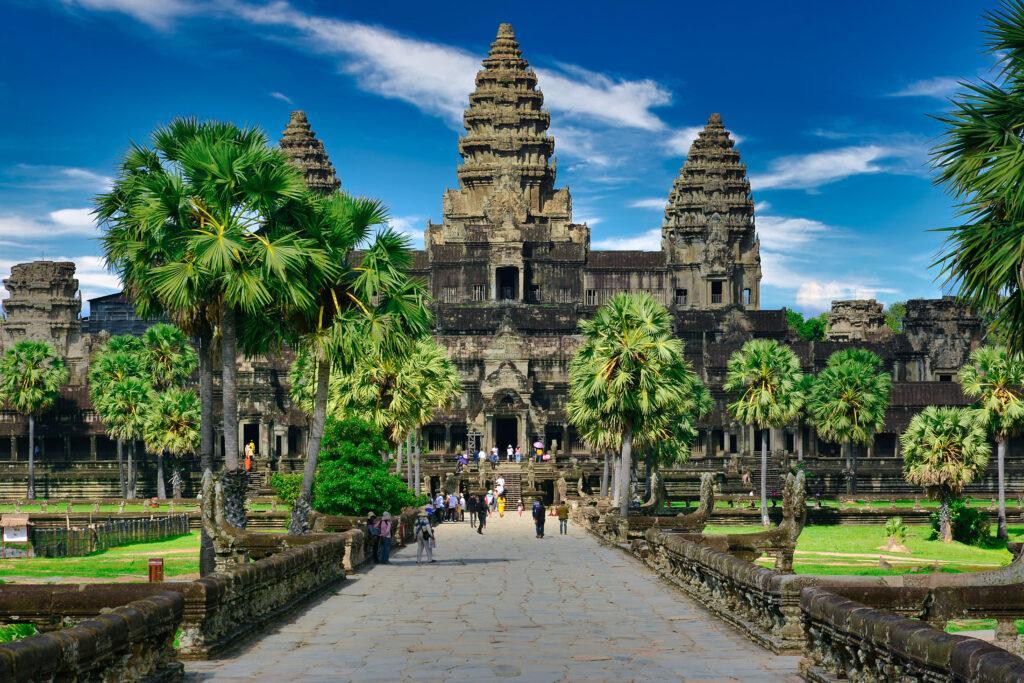The best things really do come in small packages. A perfect example of such a claim is Cambodia. Although Cambodia is relatively small, this intriguing Southeast Asian nation has a lot to offer, including a rich cultural background, a wide variety of sites to visit, endearing residents, and delectable cuisine. It’s one of those countries that captivates you and is sure to win your heart
The most well-known and fascinating feature of Cambodia is Angkor Wat, which should come as no surprise. The main reason that tourists visit Cambodia in huge groups is to visit Angkor Wat. It is regarded as one of the most stunning views in the world and is the largest sacred temple.
It sounds exciting, doesn’t it? You’ll be fascinated to know that Angkor Wat is just one of the wonders of Cambodia, and they are all waiting for you! Enjoy our suggestions for a 2-week adventure in Cambodia. Make sure not to miss a single spot on this itinerary.
Day 1: Siem Reap
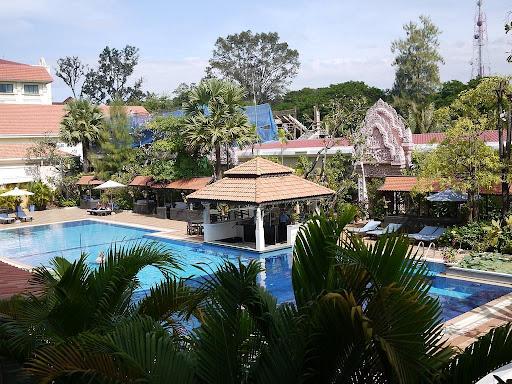
Once you land in the country, check into your booked hotel to rest and freshen up. If you haven’t found a hotel that suits your taste, we highly recommend checking booking websites to find something that suits your needs. There are many choices that are perfect for tourists who are looking for luxury at an affordable price. Often offering a beautiful pool, exercise facilities, a delectable breakfast, staying in proximity to Pub Street is generally a great choice.
When you’re ready for dinner, travel to the busy Pub Street, where there are numerous restaurants to choose from, and then unwind on the beach or in your accommodation. Try Khmer Taste if you’re seeking for something less expensive yet still delicious.
The restaurant, which has a large menu with a variety of choices such curries, western cuisine, and traditional Khmer cuisines, is located in a street that runs parallel to Pub Street.
Go back into your hotel room and prepare yourself for tomorrow’s early touring agenda. You should check out the sunrise over Angkor Wat. Do not miss the chance to experience this must-see sight in Cambodia.
Day 2, 3, and 4: Angkor
A day is not enough to explore the land of Angkor. The temples and ruins of this province are worth your time, energy, and budget. Your camera is waiting for amazing Instagrammable shots from these tourist spots. Here’s a 3-day itinerary, so that you won’t miss the highlights in your stay in Angkor.
Angkor Wat
The largest religious building in the world, Angkor Wat is a complex of temples in Cambodia that covers an area of 162.6 acres. To honor the Khmer Empire, the temple was initially built as a Hindu shrine to the god Vishnu.
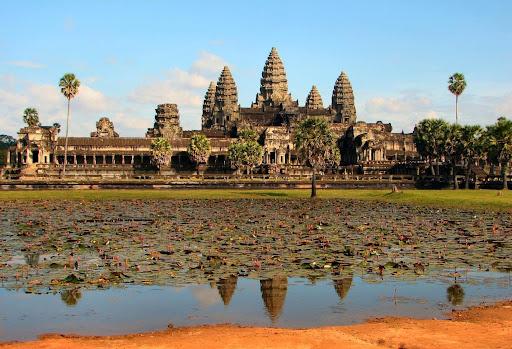
By the start of the second half of the century, it had gradually been converted into a Buddhist temple, commencing in the Khmer Empire.
Ta Prohm Temple
The known “Tomb Raider Temple,” Ta Prohm is enveloped in dappled light, its collapsing towers and walls imprisoned by the extensive root systems’ slow and powerful grasp. Every traveler should prioritize seeing Ta Prohm, which is arguably the most impressive ruin in all of Angkor.
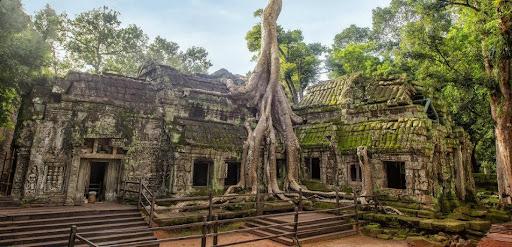
The Ta Prohm’s appeal lies in the fact that, in contrast to other Angkor temples, it has been completely overtaken by the forest and looks just like the other structures did when European explorers first came across them.
Ta Keo
The Ta Keo mountain temple, built by Jayavarman V, is one of Angkor’s most spectacular structures. It is situated to the east of Angkor Thom. On top of a 22-meter tall pyramid with five steps, where the five Ta Keo sanctuaries are located, you may get a fantastic view of the surrounding area.
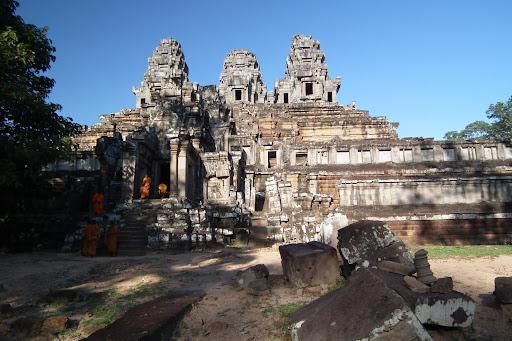
Ta Keo was built in the shape of a pyramid to represent Mount Meru, the mountain that Hindu mythology holds to be the center of the world.
Preah Khan
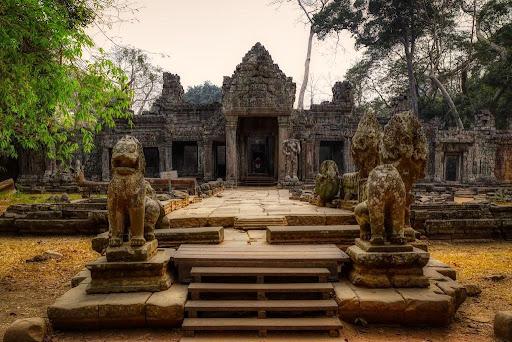
The Angkor Archaeological Park has the Preah Khan Temple, which is being rebuilt. It is one of the historic park’s biggest temple complexes
Preah Khan, which in Khmer means “Holy Sword,” was given that name in honor of Jayavarman VII in 1191 to mark his victory in a battle with Cham invaders who were a part of the kingdom of what is now Vietnam.
Angkor Thom
The name Angkor Thom, which means “Great City” in English, refers to the ancient Khmer Empire’s longest-reigning capital. The walled city served as the focal point of King Jayavarman VII’s extensive building initiative.
Bayon Temple
One of the most well-known, popular, and beautiful buildings in the Angkor Wat Archaeological Park is Bayon Temple. The Bayon Temple was formerly the heart of the city that was Angkor Thom, and it is located not far from the northern end of Angkor Wat.
To honor the Khmer King who ordered the temple’s construction, the temple is occasionally referred to as Jayavarman’s Temple. It is most well-known for its several towers, each of which has a lovely smile on its face.
South Gate of Angkor Thom
The best preserved of Angkor Thom’s gates are the southern ones. A causeway that crosses a moat that is roughly fifty meters in length allows access from the outside.
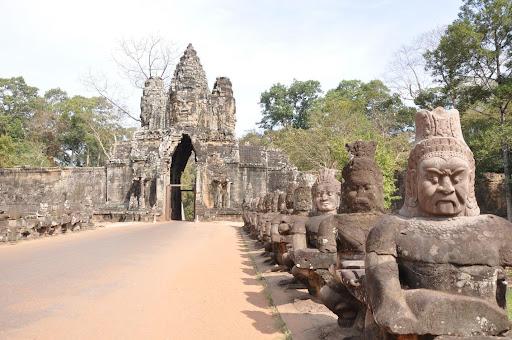
Fifty-four stone sculptures representing characters from a well-known Hindu narrative, The Churning of the Ocean, are used as barriers on either end of the causeway
Pre Rup
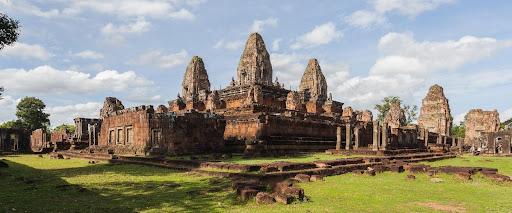
The Pre Rup Temple is a historic place of worship where visitors can take in the breathtaking sunset and the exquisiteness of Khmer architecture and culture.
Neak Pean
An island in the center of the uninhabited Jayatataka Baray, a body of water having a length of 3,500 meters and a width of about 900 meters, is home to a little temple known as Neak Pean, or “the entangled snakes.”
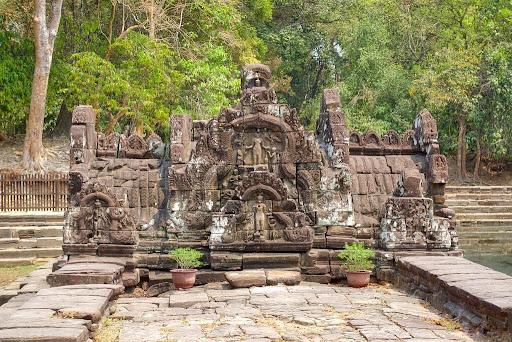
The temple was initially dedicated to Buddha, but Lokeshvara, a Bodhisattva and benevolent entity, later received it back
Ta Som
Little is known about the history and function of Ta Som, a Khmer temple near the eastern end of the Northern Baray at Angkor, which was constructed around the end of the twelfth century during the rule of the formidable Buddhist King Jayavarman VII.
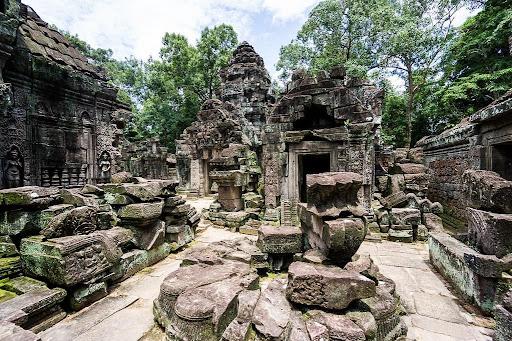
Though some have theorized that it might have been dedicated to one of his tutors, it was most likely written to Jayavarman VII’s father. When compared to the several other temples constructed under Jayavarman’s rule, the location is quite tiny.
Day 5: Spa Day
After a long tour, Day 5 is a day for self-care. Indulge yourself with what Siem Reap’s many spas can best offer. Many spa treatments can be found at a variety of price points, so use the opportunity to treat yourself to a massage, mani-pedi, facial, or a wide variety of other treatments.
Day 6: Battambang
The capital of the province that was founded in the eleventh century, Battambang is the second largest city in Cambodia. It is located in the northwest of Cambodia and served as the capital of Monton Kmer. It was the country’s largest producing province of rice prior to the war, when practically all infrastructure was destroyed.
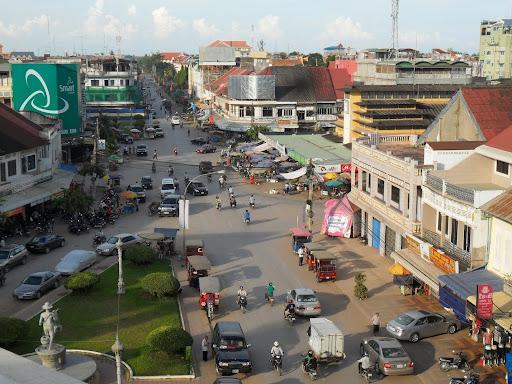
Bus service between Siem Reap and Battambang runs frequently and takes around 4 hours. Explore the city and stop by the Piphithearam and Dhum Rey Sor temples, which are located there.
Day 7: What More is in Battambang
Phnom Sampeau
The limestone outcrop is well-known for its beautiful vistas and amazing bat display, which emerges from a sizable cave carved into the cliff 12 kilometers southwest of Battambang on NH57 (towards Pailin).
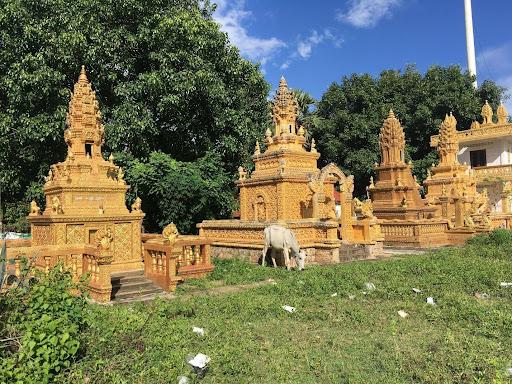
The ascent can be reached by way of a concrete road or, if you want to get a good workout, by taking the steep stairs. Near the top of the hill, motorcycle riders assemble. For $4, they’ll take you to the top and back down
Phnom Banan
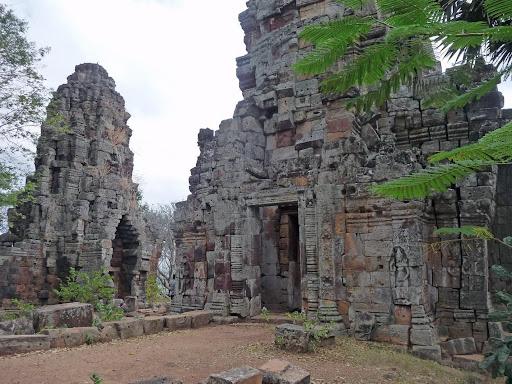
It is undoubtedly worthwhile to take a look at this temple on the peak of Angkor. On top of the mountain, there are breathtaking views of the Sangker River running past sugar palms, rice farms, and tiny towns.
You can see a mountain range, including a crocodile-shaped mountain, to the south. Both from the bottom and the top, it is beautiful. Although the temple’s structures are mainly in decent shape, they have suffered extensive theft, like many Khmer ruins.
Day 8: Cambodian Islands
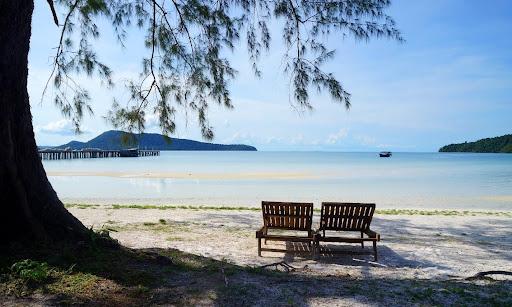
Travel to the southwest to get tanned by visiting the Cambodian Islands for a few days. Staying in Koh Rong is preferable since it is bigger and more developed than the other two islands.
Koh Rong
Koh Rong, an island known for its serene beauty, is located close to the coast of Sihanoukville, Cambodia. Visitors frequently refer to the island as a “island paradise” because of its abundance of pristine beaches, clear sea, and mild tropical weather.
Day 9: Best Beaches
Do not forget to spend time on a hammock in the Cambodian Islands! Your Cambodian beach experience is not complete without it. Of course, it’s not just the hammocks, but the beaches themselves.
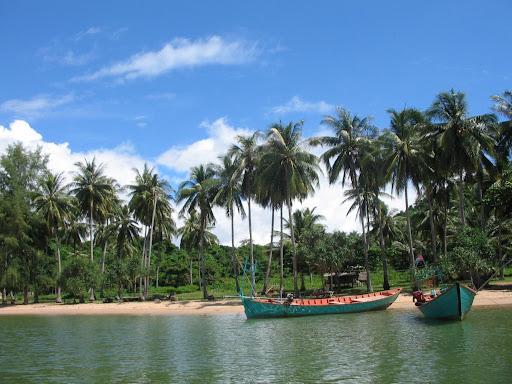
The recommended beaches to explore include 4k Beach, Long Beach, Palm Beach, and Lonely Beach.
Day 10: Koh Rong Samloem
Koh Rong Samloem
Koh Rong Samloem is the lovely sister island of Koh Rong and is situated not far from the coast of Sihanoukville, Cambodia. It’s a beautiful area with a calm atmosphere.
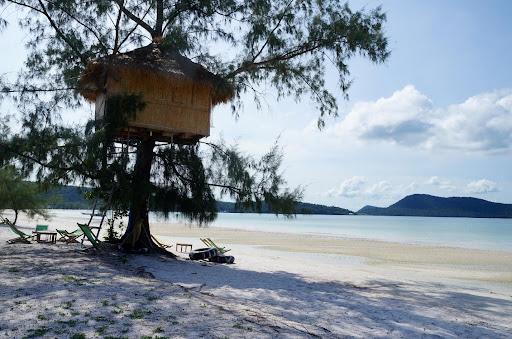
Gorgeous white beaches, glistening blue waters, and dense vegetation are all present. As frequent visitors say, it is truly an island paradise
Day 11: Kampot
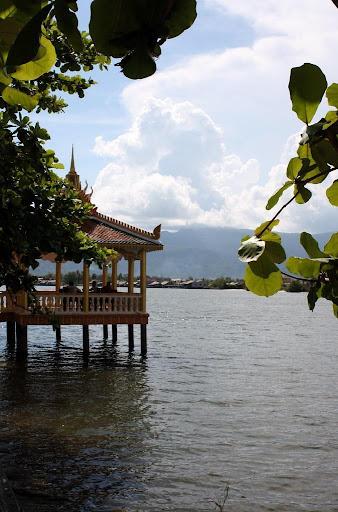
A little village in southern Cambodia that is well-known for its serene riverfront ambiance is quickly developing into a popular tourist destination. In Kampot, there are several bars and eateries where you may listen to live music while relaxing by the calm waves.
Many tourists pass through Kampot on their way to explore the stunning Bokor National Park or buy the best-quality pepper, but the town’s attractive charm has much more to offer. Whether you’re searching for a full expedition or just a relaxing afternoon by the river. Here are 5 reasons to think about going to Kampot on your upcoming vacation to Cambodia.
Day 12: Kep
Just a short tuk-tuk ride from Kampot is the historic beach resort of Kep (about 30 minutes). Although Kep is not busy, it is gradually expanding as more people travel there each year. It’s the ideal place to relax for a while and take in the tranquility.
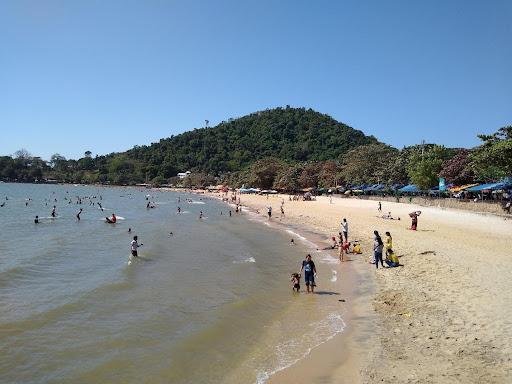
The main beach is a huge, sandy cove that is popular with both tourists and locals, especially on the weekends when many Phnom Penh weekenders come to the beach to unwind.
Day 13: Phnom Penh
The streets of Phnom Penh are always alive with energy. The capital of Cambodia is rich in architecture, history, cuisine, and culture, and it has the kind of vibrant, buzzing atmosphere you’d expect from a major Asian metropolis.
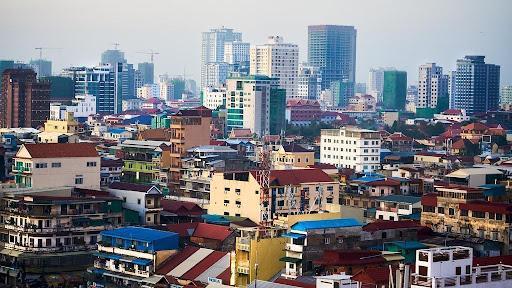
Phnom Penh is moving forward and embracing an exciting future, despite the city’s obvious traces of Cambodia’s violent past.
Day 14: Journey to Phnom Penh
Royal Palace
The Phnom Penh Royal Palace, a traditional Khmer-style Throne Hall, was constructed in 1866 to serve as the residence of the King of Cambodia and his family. In addition to hosting foreign visitors, the palace served as a location for ceremonial and court proceedings
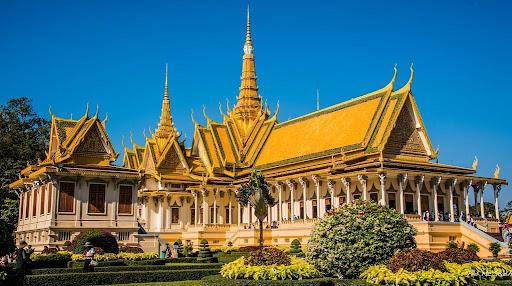
In the end, the palace serves as a symbol of the state. The Royal Treasury and Napoleon III’s Villa are located to the south of the Throne Hall. They were built in Egypt in 1866 in advance of the Suez Canal’s official opening and were later given as gifts to the King of Cambodia.
Silver Pagoda
The well-known Silver Pagoda was initially built in 1866 out of wood. King Sihanouk expanded it to its present size in 1962 and gave it the name by inlaying the floor with 5,329 silver tiles.
Traffic noise is effectively blocked from entering the palace grounds. In the luscious tropical grounds, the palaces are peaceful.
National Museum
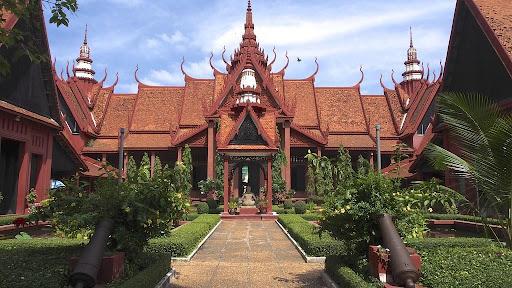
The largest collection of Khmer sculpture, comprising works that span a millennium, can be found at the National Museum of Cambodia.
It is housed in a stunning terracotta building with a lovely courtyard garden that is situated to the north of the Royal Palace and was constructed between 1917 and 1920.

